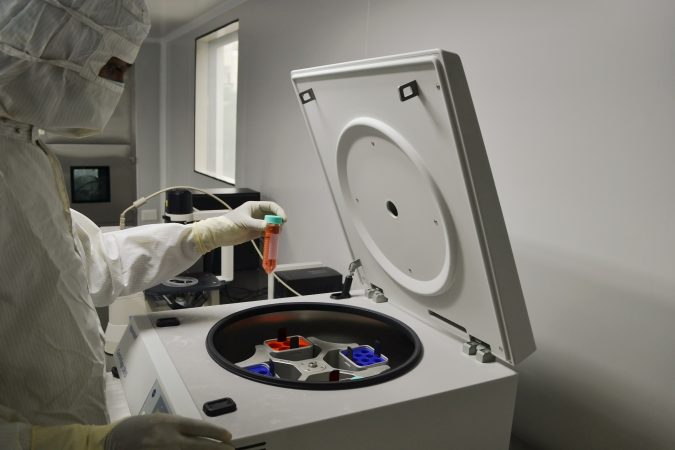If the couple is having trouble conceiving, then the first thing the doctor would recommend is a reproductive workup. This workup involves the evaluation of the reproductive organs to ensure that they are functioning normally. It is also to be noted that most of these tests are covered by insurance policy. Hence the expense factor is taken care of.
In the fertility workup, major reproductive organs that play a vital role in fertility are screened and this includes ovaries, uterus, fallopian tubes, and sperm analysis of the male individual. On screening, if there are any abnormalities found during the workup, the doctor will provide an appropriate treatment plan and ensure natural conceiving.
Evaluating the Ovaries
There are various hormone tests involved to evaluate the functioning of the ovaries and this includes a nonexclusive hormone profile, anti-Müllerian hormone (AMH) test, follicle-stimulating hormone (FSH) test, and antral follicle count (AFC).
The first three of the above-mentioned tests are simple blood tests, while the antral follicle count (AFC) involves a pelvic ultrasound.A hormone test will help us to know if appropriate levels of hormones are secreted in the body. Major hormones responsible for the menstrual cycle are estrogen, progesterone, and testosterone. These hormones are responsible for ovulation, fertilization, and implantation of the embryo as well. A doctor recommends hormone profiling to ensure that there is no issue of hormone imbalance.
Anti-Müllerian hormone (AMH) test is carried out during the menstrual cycle and helps to measure the levels of AMH in the blood. AMH is secreted in both male and female reproductive tissues. This AMH level determines your egg supply. Higher the egg reserve, the higher the chance of pregnancy! This test helps your doctor predict your egg supply.it also facilitates the doctor in prescribing appropriate medication and framing an ideal treatment.
This test evaluates the levels of FSH hormone.FSH or follicle-stimulating hormone is responsible for the production of the ovarian follicles. This hormone is sent to the ovaries during the initial days of the periods, hence this test is always carried on the second or third day of the cycle.
An AFC test helps to count the number of follicles present in each ovary. Follicles are extremely important for a regular menstrual cycle. This test also indicates the number of eggs available for fertilization. Higher the number of hormone-secreting follicles, the higher the chance of getting pregnant!
Evaluating the Fallopian Tubes
Fallopian tubes are tubular structures that carry the egg from the ovaries to the uterus. Fallopian tube blockage can affect the fertility of the female individual. A hysterosalpingogram (HSG) test helps to evaluate the condition of the fallopian tubes and helps to detect blocks and other abnormalities. A hysterosalpingogram (HSG) test is an x-ray test wherein a dye is passed through the fallopian tubes. If there is a clear movement of dye, it means that there are no blocks in the fallopian tubes. The dye movement enables visualization of the uterine outline. Hence, this test is also used to detect structural abnormalities. It also indicates the presence of uterine polyps and tumors in the uterus.
Evaluating the Uterus
The uterus is a hollow reproductive organ and the region where the fetus grows. The uterus is connected to the ovaries with the help of fallopian tubes.
Four major tests are considered to evaluate the condition and health of the uterus and this includes a pelvic ultrasound, saline sonogram, hysteroscopy, and an endometrial biopsy.
Generally, pelvic ultrasound and saline sonogram are performed simultaneously.In pelvic ultrasound, a small device is inserted through the vagina into the uterus and the uterus is evaluated. Simultaneously, a saline sonogram is also carried out. In a saline sonogram, a solution is passed into the uterus and the outline and shape of the uterus are evaluated. Both the tests allow the doctor to rule out the presence of polyps, tumors, cysts, and other abnormalities of the uterus.
Hysteroscopy is an endoscopic procedure wherein a thin tube(hysteroscope) is inserted into the vagina. One end of the tube has a camera that allows the doctor to examine the uterus and identify abnormalities and treat those abnormalities. .Hysteroscopy procedure enables detection as well as treatment.it is a less invasive yet highly effective process.
Endometrial biopsy is a medical procedure in which a small amount of endometrial tissue is collected and analyzed for cancer, tumors, hormonal issues, infections, and other conditions that are causing infertility. In this process, a thin tube is inserted into the vagina and a small portion of the endometrial tissue is excised.
Evaluating the Sperm
Semen analysis is done to evaluate any male infertility issues. Male infertility is due to various factors like genetics, health, age, and lifestyle habits. Around 40-50% of all infertility cases are due to semen issues.
For a semen analysis, a semen sample is collected from the male individual and subjected to microscopic examination. On microscopy, the structure, viability, and motility of the sperm cells are evaluated. This examination helps to determine the quality of the sperm. This test also allows the doctor to know the sperm count.
In case of any abnormality, a follow-up test is required to detect the underlying cause.
Nowadays, male infertility is extremely common and they are easily treated by either improving the sperm quality and count or by assisted delivery of the sperm to the uterus or directly to the unfertilized egg.
This entire reproductive workup is extremely time consuming and can take over a month to complete. However, this evaluation is crucial for any fertility treatment. It not only helps one to have a clear picture of the reproductive issues they have but also allows the doctor to diagnose the condition and provide an appropriate treatment plan catering to the requirements.

